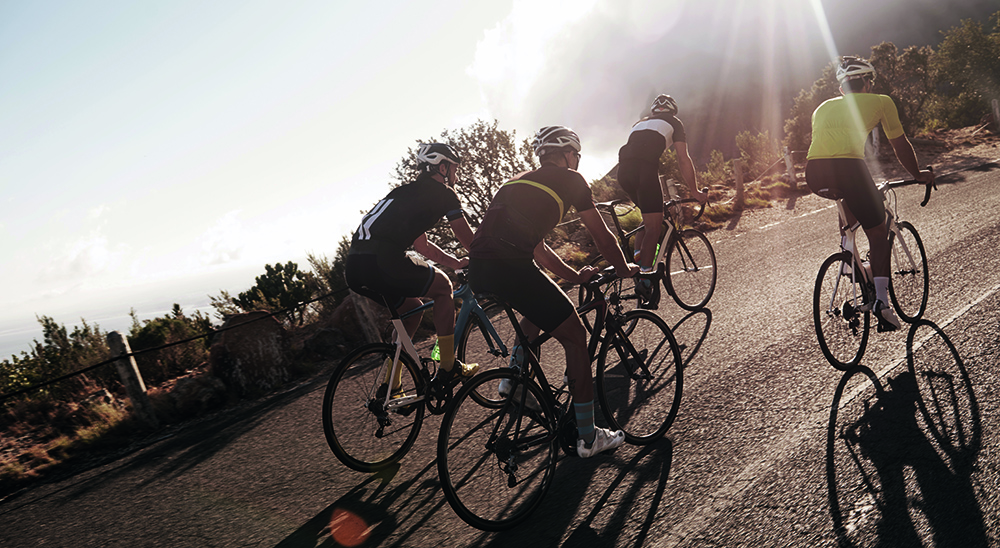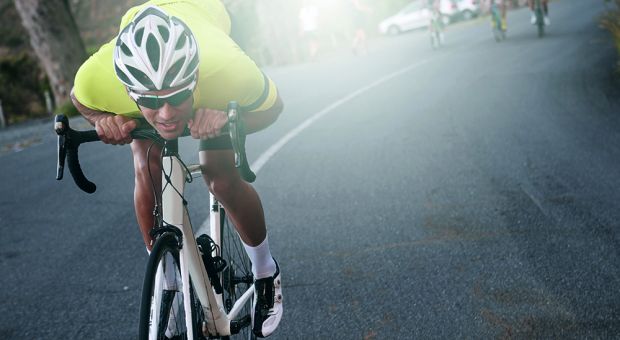How To Ride Faster Up Hills
It’s a necessary evil if you’re a cyclist. Here’s how to master the dreaded inclines

There’s no two ways about it: cycling up a hill is an endeavour that will always come with some physical hardship. Gravity set those rules long ago. But hills and mountains form the basis for many people’s love of the sport of cycling – they’re big, fearsome, epic challenges, and when they are overcome, the sense of achievement makes every drop of sweat expended to get to the top worth it.
If you’re finding the going too tough, fear not – we’ve enlisted experts to help you get the better of those topographical monsters with no superpowers other than a bit of smart training and preparation. So, what do you need to remember the next time the road goes up?
What gearing should I use on hills?
“If you find you can’t get into a low enough gear for very steep climbs, do some research into the gearing on your bike,” says Matt Green, a pro cyclist and coach (procoaching.us). “Check the front chainring sizes – the smaller the smallest front chainring and the bigger the biggest rear cog, the easier it will be to pedal on climbs.”
The right gear enables you to find the right cadence – basically pedal revolutions per minute – which is particularly vital on climbs. “It’s all about cadence,” Green says. “About 90-100 revolutions per minute is optimal.” A higher cadence means greater pedalling efficiency, so you want to find the sweet spot: a gear that gives you both high cadence and speed.
How should I pace my effort on a climb?
“It may sound basic, but a good measure of pace is whether you’re able to talk,” says Green. “If you feel you could utter a few sentences but you’re too out of breath to hold a full conversation, that’s a good pace for riding up hills. If you can only muster the odd word, that indicates you’re going too hard.”
That applies mainly to long climbs – if an incline is short enough, it can be more efficient to put in a harder effort, ensuring you get up and over the climb quickly, maintaining speed into the descent. As James Bowtell, Race Across Europe record breaker and founder of “luxury cycling experience” provider Velusso (velusso.co.uk), says, “Some climbs are too steep to pace – you simply need to get over them. But on shallower, longer climbs, pacing is key.”
RECOMMENDED: How To Cycle Faster For Longer
Get the Coach Newsletter
Sign up for workout ideas, training advice, reviews of the latest gear and more.
Is it better to stay in the saddle or stand when climbing?
“Being out of the saddle provides you with extra torque (rotational force) on the pedals,” says Green. “You need a lot of torque for short, steep climbs, or you’ll simply fall of. When going up longer, steadier gradients, stay in the saddle and concentrate on that cadence target of 90-100rpm.”
“Heart rate and oxygen uptake are higher when pedalling out of the saddle at higher speeds on a shallow gradient, and that’s less efficient,” says Bowtell. “For maximum efficiency, ride in the saddle on shallower hills and out of it on steeper gradients.”
What should I do if I start to struggle halfway up?
“If you start to struggle it means you have built up too much lactic acid and your body can no longer metabolise all of it,” says Green. “It means you need more oxygen in your system and you need to decrease your intensity for a while. Shift down a few gears, and just be patient until you’ve caught your breath.”
Bowtell simplifies this further. “Step off the gas,” he says, “and tell yourself everything will be just fine.”
How should I position my hands when riding uphill on a road bike?
“You don’t need to worry about aerodynamics when riding uphill because speed isn’t important, so this boils down to what feels most comfortable,” says Green. “Keeping your hands on the hoods or on the top of the bars are both good ideas though.”
Why is that? Efficiency, again. “Placing your hands on the hoods opens up your chest and lungs, and it also allows you to easily stand up out of the saddle if the gradient changes suddenly,” says Bowtell. “Hands on the tops will help relieve pressure off your back, though. But for style: on the drops and out of the saddle – like the great Marco ‘The Pirate’ Pantani.”
How can I train to become better at hills?
“You need to increase your ability to work aerobically,” says Green. “If I was coaching a rider to climb, we would do five three-minute intervals where they’re working at about 95-100% of their threshold power, and two 20-minute intervals at 87-91% of their threshold power, each week.”
If you’ve not got a power meter or heart-rate monitor to measure your threshold power, that essentially means five three-minute intervals at close to maximum, then 20-minute intervals at a pace you can just about sustain for the full duration. You don’t need hills for these sessions, but you’ll feel the effects when riding them because you’ll increase your power-to-weight ratio (how much power you produce for how much you weigh).
“For a Tour de France rider this figure is absolutely key,” says Bowtell. “Chris Froome’s power to weight ratio, as an example, is about 6.3watts/kg when he’s climbing at full capacity.”
So losing some weight will help too?
“Slow and smart weight loss is crucial,” says Green. “A month-long crash diet will deplete your body and mind of fuel. Your brain is what motivates you to train and if you starve it of food everything will suffer – not just your ability to exercise.”
One thing you shouldn’t do is cut your intake of fats, which Green calls “the most misunderstood of the food groups”. “Increase your consumption of healthy fats and reduce carbohydrate intake, and you should start to see some weight loss,” he advises.
Bowtell recommends “a healthy diet with a minimum of sugary and processed foods” to reduce body fat and stresses that you must also retain muscle mass. “To do this, take in 1.5g of protein per kilo of bodyweight each day, which is 120g of protein for somebody weighing 80kg. This will complement the decrease in body fat and improve your hill climbing times.”
RECOMMENDED: High-Protein Foods
Is there any mental preparation I can do to help?
“It’s arguably the main component of any ride,” says Green. “There is no other immediate way to increase your potential performance before a climb – besides maybe a cup of coffee – other than to visualise it.” So how do you do that? “Close your eyes and run through the climb in your mind. Feel the gradients, feel the road surface through your handlebars, feel the temperature of the air and the burning of your lungs. Chemicals like dopamine, serotonin and endorphins are released and they prime you, leaving you ready to perform at your very best.”
RECOMMENDED: How to Cycle Faster According to New Book Cycling Science
How To Descend Better

- Get ready to drop: Keep your hands on the drops. This lowers your centre of gravity and keeps you more stable.
- Use the whole road: Use the road’s width to your advantage. Get into the outside of the lane, and corner through the apex to carry your speed.
- Don't get over-confident: Just because you’ve nailed a few corners, that doesn’t make you a pedalling version of Valentino Rossi.
- Don't pedal in corners: Keep your outer leg down. You don’t want to pedal around a corner and hit it on the road, knocking you off.
